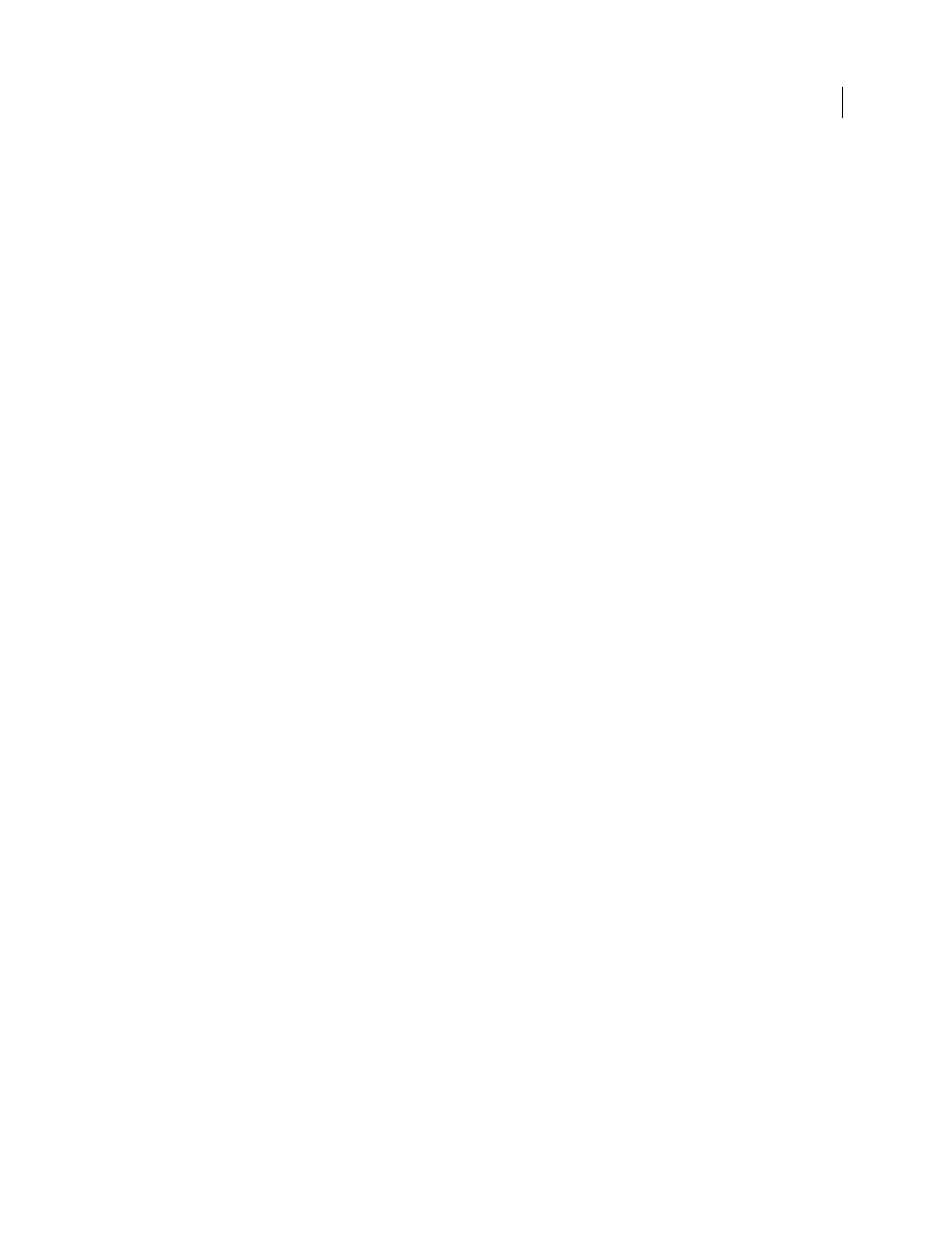Adobe Dreamweaver API Reference CS5 User Manual
Page 303

298
DREAMWEAVER API REFERENCE
Document
Last updated 8/27/2013
Description
Scans a string of HTML and finds the tags, attributes, directives, and text. For each tag, attribute, directive, and text
span that it finds, the
scanSourceString()
function starts a callback function that you must supply. Dreamweaver
supports the following callback functions:
•
openTagBegin()
•
openTagEnd()
•
closeTagBegin()
•
closeTagEnd()
•
directive()
•
attribute()
•
text()
Dreamweaver calls the seven callback functions on the following occasions:
•
Dreamweaver calls
openTagBegin()
for each opening tag (for example,
<font>
, as opposed to
</font>
) and each
empty tag (for example,
<img>
or
<hr>
). The
openTagBegin()
function accepts two arguments: the name of the
tag (for example,
"font"
or
"img"
) and the document offset, which is the number of bytes in the document before
the beginning of the tag. The function returns
true
if scanning should continue or
false
if it should stop.
•
After
openTagBegin()
executes, Dreamweaver calls
attribute()
for each HTML attribute. The
attribute()
function accepts two arguments, a string that contains the attribute name (for example,
"color"
or
"src"
) and a
string that contains the attribute value (for example,
"#000000"
or
"foo.gif"
). The
attribute()
function
returns a Boolean value that indicates whether scanning should continue.
•
After all the attributes in the tag have been scanned, Dreamweaver calls
openTagEnd()
. The
openTagEnd()
function accepts one argument, the document offset, which is the number of bytes in the document before the end
of the opening tag. It returns a Boolean value that indicates whether scanning should continue.
•
Dreamweaver calls
closeTagBegin()
for each closing tag (for example,
</font>
). The function accepts two
arguments, the name of the tag to close (for example,
"font"
) and the document offset, which is the number of
bytes in the document before the beginning of the closing tag. The function returns a Boolean value that indicates
whether scanning should continue.
•
After
closeTagBegin()
returns, Dreamweaver calls the
closeTagEnd()
function. The
closeTagEnd()
function
accepts one argument, the document offset, which is the number of bytes in the document before the end of the
closing tag. It returns a Boolean value that indicates whether scanning should continue.
•
Dreamweaver calls the
directive()
function for each HTML comment, ASP script, JSP script, or PHP script. The
directive()
function accepts two arguments, a string that contains the directive and the document offset, which
is the number of bytes in the document before the end of the closing tag. The function returns a Boolean value that
indicates whether scanning should continue.
•
Dreamweaver calls the
text()
function for each span of text in the document (that is, everything that is not a tag
or a directive). Text spans include text that is not visible to the user, such as the text inside a
<title>
or
<option>
tag. The
text()
function accepts two arguments, a string that contains the text and the document offset, which is
the number of bytes in the document before the closing of the closing tag. The
text()
function returns a Boolean
value that indicates whether scanning should continue.
Arguments
HTMLstr, parserCallbackObj
•
The HTMLstr argument is a string that contains code.